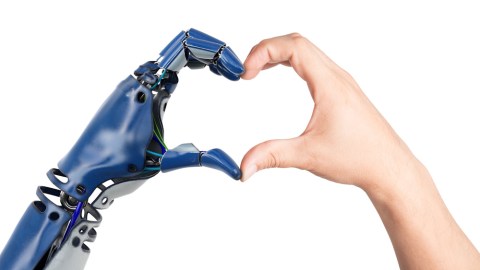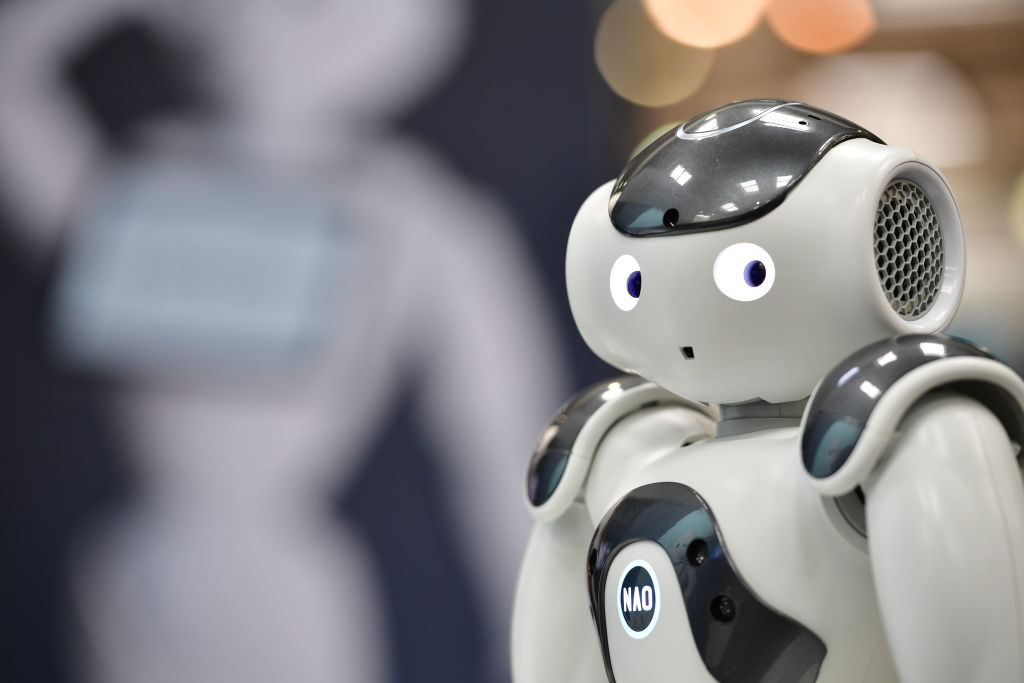In 2020, more men and women are likely to consider sex with a robot

Credit: Dim Dimich on Shutterstock
- In 2016, “Harmony”, the world’s first AI sex robot was designed by a tech firm called Realbotix.
- According to 2020 survey data, more than one in five Americans (22 percent) say they would consider having sex with a robot. This is an increase from a survey conducted in 2017.
- Robots (and robotic tech) already play a vital role in speeding up manufacturing, packaging, and processing across various industries.
You can soon buy a sex robot equipped with artificial intelligence for about $20,000www.youtube.com
“…amid an economic crisis, with restaurants and retailers closing their doors and larger companies laying off and furloughing employees, the sex tech industry is booming.”
A Bustle article published in April 2020, weeks after COVID-19 was declared a pandemic, explored the drastic boost in the sex tech industry. According to the research, Dame Products (a popular sex toy retailer) experienced a 30 percent increase in sales between the months of February to April, and popular sexual wellness brand Unbound reported selling twice as many toys as normal in this period.
While the new coronavirus was crashing the economy in other ways, the sex tech industry was one of the few that actually saw improvements, likely due to people all over the world being advised, encouraged, and in some instances forced to stay at home.
Something similar happened in 2008, during the recession: the sex toy industry was one of the only industries at the time that didn’t gravely suffer.
The evolution of sex tech from stone dildos to artificial intelligence.
The history of sex toys is quite interesting. A 28,000-year-old siltstone dildo was uncovered in Germany in 2005. Luxury bronze dildos have also been found in China that are at least 2,000 years old.
Aside from various materials being shaped into dildos, there has always been an interest in how to advance sex technology, even before it involved actual technology at all.
- The 1700s: Steam-powered vibrators (such as the Manipulator).
- The 1800s—1900s: The invention of the first electric vibrator (the Pulsoson) and “beauty tools” being used for sexual satisfaction (such as the Polar Cub massager)
- The 1920s—1940s: The introduction of hand-held massagers (the Andis Vibrator) and compact devices (such as the Oster Stim-U-Lax)
- The 1940s—1960s: Japan introduced the “Cadillac of Vibrators” (The Hitachi Magic Wand), which eventually made it’s way to America.
- 1965: The invention of silicone, which most modern sex toys are made of.
- The 1980s—1990s: The invention of the rabbit-style vibrator, made more popular with one of the first showings of a sex toy on television (“Sex and the City”).
- The 2000s: Visual porn website Pornhub launched and sex toys became increasingly popular. Erotic literature also became more common and popular, with “50 Shades of Grey” and others like it.
- The 2010s and beyond: Sex toys and technology start to blend, and the world’s first internet-controlled sex toy was launched in 2010 by Lovense.
In 2016, “Harmony”, the world’s first AI sex robot was designed by a tech firm called Realbotix.

From television shows to real-life applications, artificial intelligence (AI) is becoming more and more popular in all areas of human life.Credit: Willyam Bradberry on Shutterstock
In 2020, more than one in five Americans (22 percent) say they would consider having sex with a robot. YouGov conducted a study in February 2020 that compared results from a similar study from 2017.
According to the results, 6 percent more people in 2020 are comfortable with the idea of having sex with a robot than in 2017.
YouGov points out that the increase in consideration is particularly significant among American adults between the ages of 18-34 years old. Additionally, how people feel about having sex with a robot has also changed. In 2020, 27 percent of Americans said they would consider it cheating if they had a partner who had sex with a robot during the relationship, compared to the 32 percent reported in 2017.
“If you had a partner who had sex with a robot, would you consider it cheating?”
The results from this interesting study also reveal that many people (42 percent) believe having sex with a robot is safer than having sex with a human stranger.
Robots (and robotic tech) already play a vital role in speeding up manufacturing, packaging, and processing across various industries. From television shows to real-life applications, artificial intelligence is becoming more and more popular in all areas of human life.
According to YouGov, “a Bloomberg report outlining Amazon’s plans for an Alexa-powered robot that follows and helps you around the home may redefine how these machines service humans in the near future.”





